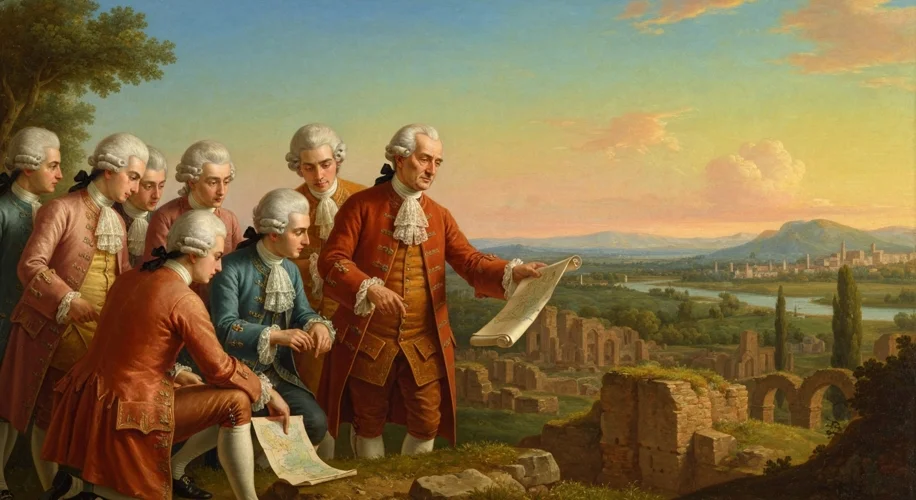The Grand Tour: More Than Just a Trip
As a historian specializing in 18th-century Europe, I’ve always been drawn to the intricate tapestry of life during that era. Today, I want to pull back the curtain on a practice that profoundly shaped European culture and the individuals who participated: the Grand Tour.
For young men of the British aristocracy and gentry, and later a wider European elite, the Grand Tour was a rite of passage. Undertaken typically between the ages of 17 and 21, it was far more than a leisurely holiday. Lasting anywhere from several months to several years, this extensive journey across continental Europe was designed to complete their education, expose them to classical antiquity and Renaissance art, and cultivate sophisticated manners and worldly experience.
The Itinerary and Its Purpose
The typical route, which evolved over time, often began in the southern ports of England, crossing the English Channel to France. Paris, with its vibrant court life and intellectual salons, was usually the first major stop. Here, travelers would brush up on their French, learn fencing and dancing, and immerse themselves in high society. It was also a place to refine their understanding of etiquette and political discourse.
From France, the journey often led to Italy, the ultimate destination for many. Cities like Turin, Milan, Florence, Rome, and Naples were essential stops. In Rome, aspiring gentlemen would marvel at the ruins of the Roman Empire, visit the Vatican, and perhaps even meet the Pope. Florence offered the unparalleled artistic treasures of the Renaissance, while Naples provided views of Pompeii and Herculaneum, sites of recent archaeological discoveries that were igniting imaginations across Europe.
It wasn’t solely about sightseeing, however. The educational component was paramount. Travelers were often accompanied by a tutor or “bear-leader” who ensured they studied, kept journals, and engaged with local scholars and artists. They were expected to learn about classical history, architecture, art, and the political landscape of the regions they visited. My own research in archives has revealed detailed travel diaries filled with observations on everything from the construction of Baroque churches to the intricacies of Italian opera.
Beyond the Elite
While the Grand Tour is often associated with the wealthy elite, its influence wasn’t confined to them. The exchange of ideas and artistic styles that occurred during these tours had a ripple effect across Europe, contributing to the spread of Neoclassicism in art and architecture, and fostering a shared European cultural identity among the educated classes.
It’s fascinating to consider how these journeys, undertaken without modern conveniences, shaped the worldview of a generation. The firsthand experience of different cultures, the direct encounter with historical masterpieces, and the challenges of long-distance travel instilled a unique perspective that many carried throughout their lives. The Grand Tour was, in essence, an immersive history lesson, a cultural exchange, and a personal transformation all rolled into one. It truly laid the groundwork for a more interconnected European intellectual and artistic landscape.
Researching Your Own Roots
For those interested in tracing their own ancestry, particularly if they had relatives in aristocratic or scholarly circles of the 18th century, researching Grand Tour participation can be a rewarding endeavor. Archives often hold passenger lists, letters, and journals that shed light on these extensive travels. Exploring genealogical resources and historical societies can uncover fascinating details about your ancestors’ journeys and discoveries across Europe.

